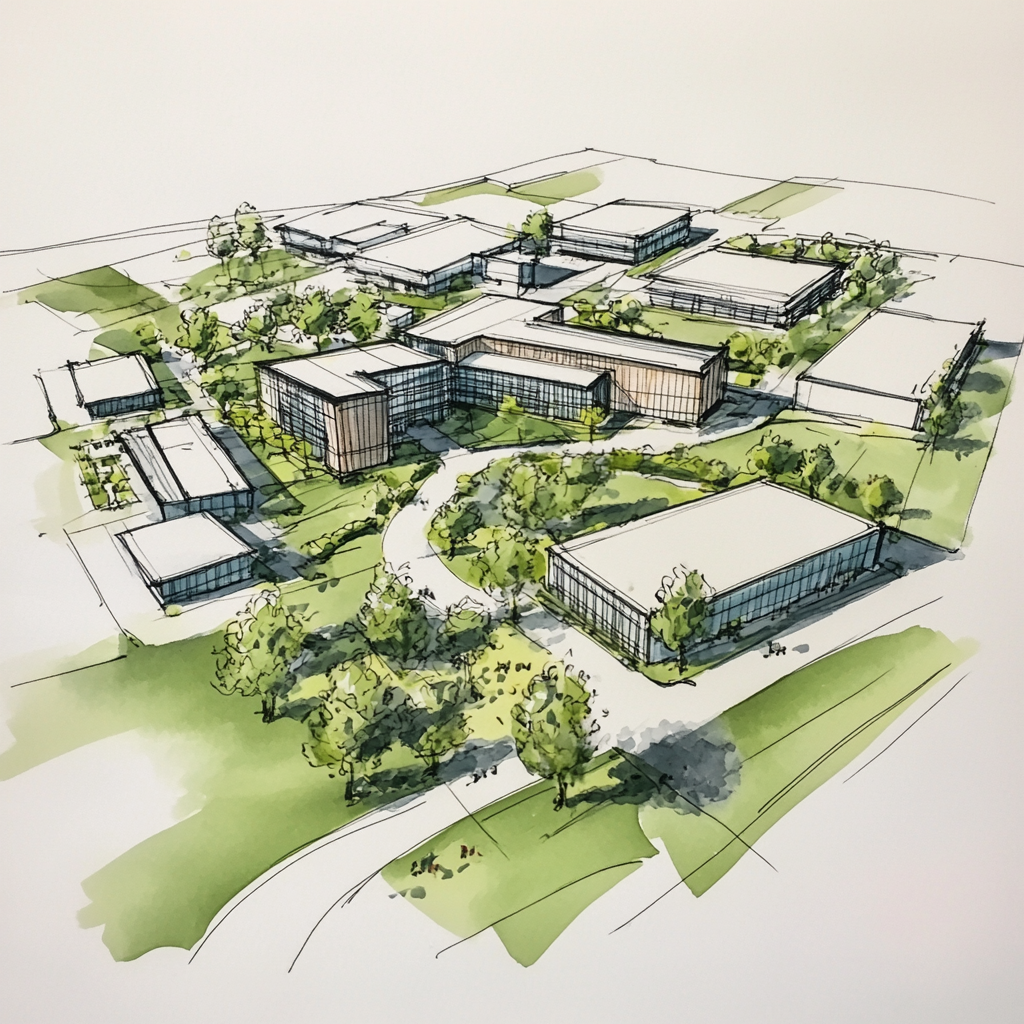Real estate planning is a key stage in the design of a project, enabling it to be adapted in size and use to the area in which it is to be located.

A project adapted to the terrain
The symbiosis of the project and its location
Programming helps determine the ideal project size
Project planning is a crucial stage, the aim of which is to create the most suitable product for the customer, taking into account the constraints of the site.
It is necessary to determine an energy output adapted to the buildable area, in accordance with local planning regulations.
The floor area of the project varies according to the IT equipment that will be integrated into the use of the building (Cloud, AI, HPC).
To make the best possible use of the waste heat generated by the data center, it is essential to anticipate its treatment, taking into account nearby heating networks and private or public facilities that consume large amounts of heat.
In fact, recovering waste heat involves recovering the calories produced
during the normal operation of servers whose purpose is not to produce heat. It converts calories that would otherwise have been lost into useful energy that can be re-injected locally or via a district heating network.
Programming is crucial to project integration
Power output
Optimize locally available energy power
Floor area
Optimize project constructibility according to local constraints
Fatal Heat
Optimize the use of waste heat from the nearby area
